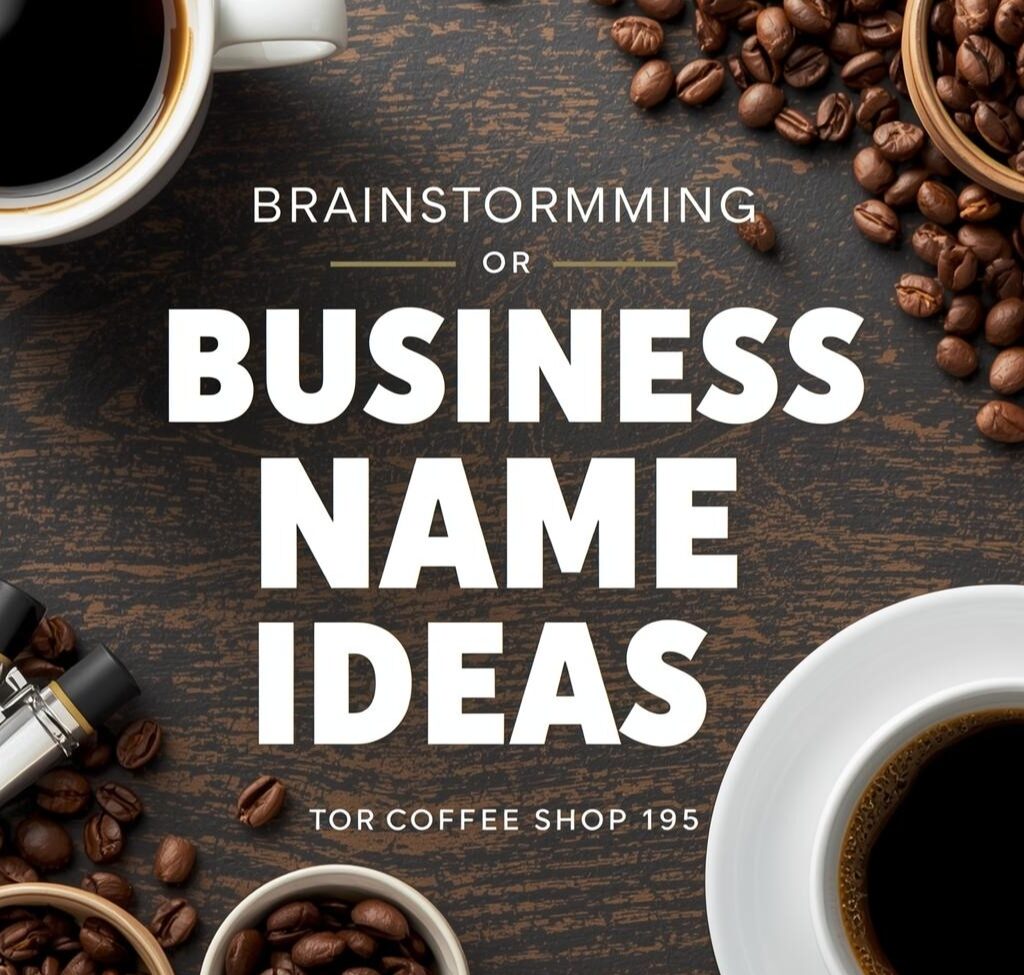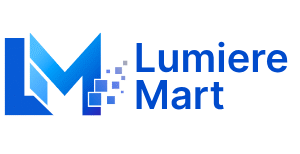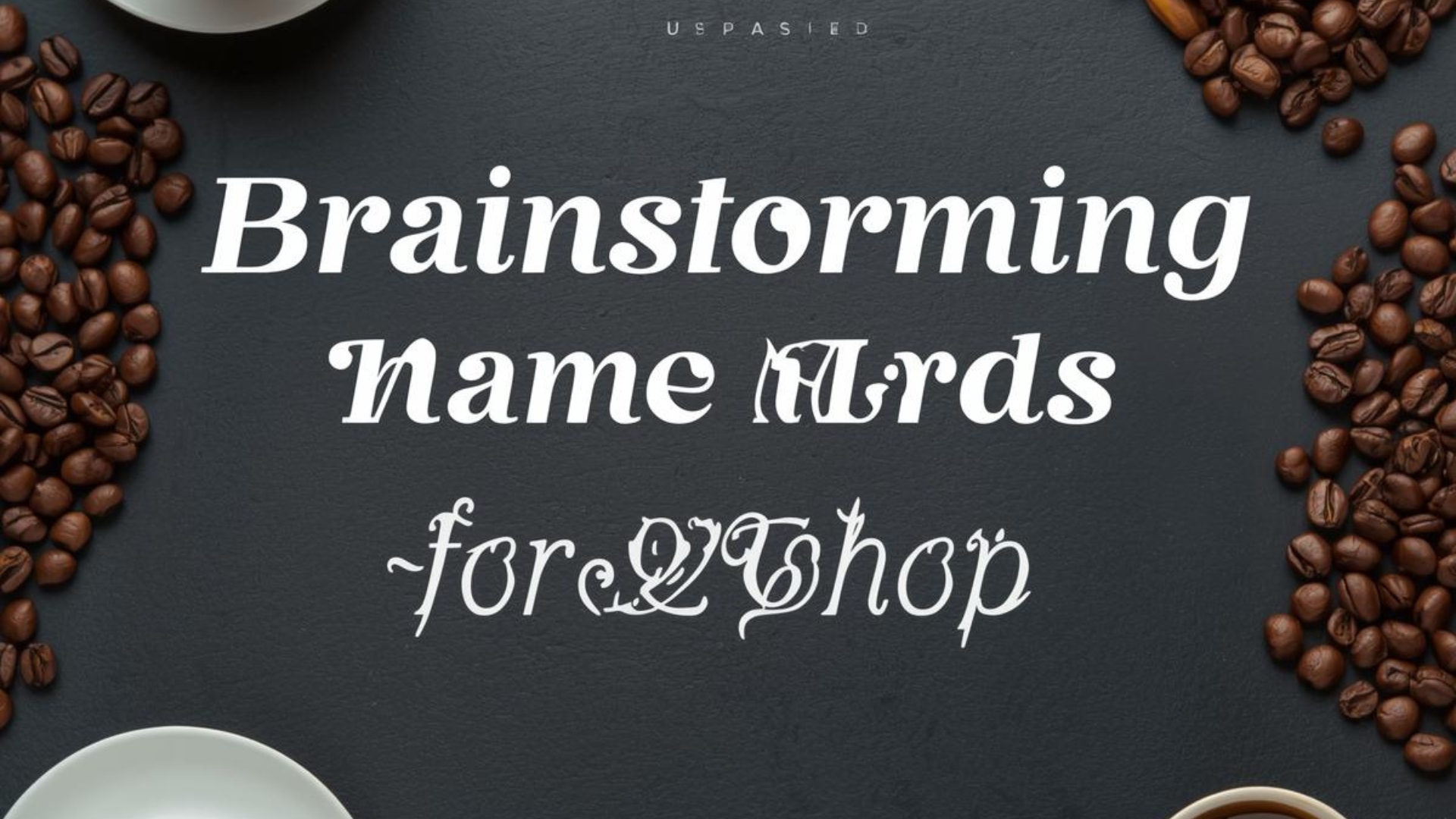Naming a coffee business is a big step. The name tells your story. It shapes how people feel. First, set a clear plan. Know what makes your coffee special. Know your audience and your tone. Then, brainstorm themes. Test, check legal and digital, and choose with a scorecard.
Studies show names guide first impressions. Clear names help recall. Short words improve sharing. Research also finds fit matters. The name should match the market and audience. Legal checks reduce risk. Digital checks protect brand reach. Evidence supports testing for clarity, meaning, and growth.
Ready to stand out? Pick three words for your brand. Then explore themes like modern, heritage, or eco. Next, test your top five with real people. After that, lock the domain and handles. Finally, score clarity, connection, memory, and flexibility. Choose the winner. Launch with confidence.
Start with Your Strategy
A good name starts with a solid plan. Think about your business first. What makes your coffee special? Who are your customers? Your name should reflect these core ideas. It must communicate your unique value. A clear strategy makes naming easier. It ensures your final choice fits your vision.
First, define your brand identity. Are you a cozy local cafe? Perhaps you are a modern, high-tech roastery. Your identity guides your name’s tone. It could be playful, premium, or traditional. Write down three words that describe your business. These words become your compass.
Next, identify your target audience. Are you serving busy commuters? Maybe you target coffee connoisseurs. The name should appeal to these specific people. A name for students is different from one for luxury shoppers. Know your audience. Speak their language.
Brainstorming Names with Themes
Now you can start brainstorming. Create long lists of potential names. Do not judge ideas yet. The goal is quantity. You can group ideas into themes. This helps organize your thoughts. It also sparks new creative directions. Let’s explore some popular themes for inspiration.

Modern Names
These names feel fresh. They are often short and clean.
- Alloy Coffee
- Vector Beans
- Metric Roasters
- Static Coffee Co.
- Cortex Brew
Heritage Names
These names suggest tradition. They feel established and trustworthy.
- The Gilded Mug
- Hearthside Roasters
- Old Town Coffee House
- The Proprietor’s Pour
- Anchor & Bean
Artisanal Names
These names highlight craftsmanship. They focus on quality and detail.
- Forged Coffee Co.
- The Gristmill Roastery
- Canvas & Clay Coffee
- Handspun Brews
- The Alchemist’s Coffee
Eco-Friendly Names
These names show a commitment to sustainability. They connect with nature.
- Verdant Bean
- Sunstone Coffee
- Terra Madre Roasters
- Kindred Ground
- The Grove Coffee
Playful Names
These names are fun. They have personality and stand out.
- The Jumpy Bean
- Grin & Grind
- Rocket Fuel Coffee
- Silly Goose Roasters
- The Daily Jolt
Premium Names
These names feel exclusive. They suggest high quality and luxury.
- Onyx Pour
- Estate 9 Coffee
- Vellum Coffee Roasters
- The Gold Leaf Bean
- Precept Coffee
Local-Flavor Names
These names connect to a place. They build strong community ties.
- Riverbend Roasters
- Summit Creek Coffee
- Elm Street Coffee
- The Harbor Brew
- Iron Range Roasters
Tech-Forward Names
These names are for innovative brands. They suggest precision or a new process.
- Flow State Coffee
- Binary Brew
- Quantum Roasters
- The Grid Coffee
- Code Coffee Co.
Check for Legal Availability
You have a shortlist of names. Now you must check if they are available. This step is critical. A name already in use causes serious problems. You could face legal action. You might have to rebrand completely. Perform these checks for your top 3-5 names. First, search the U.S. Patent and Trademark Office (USPTO) database. This is called the Trademark Electronic Search System (TESS). A TESS search shows if a similar name is trademarked. Look for names in the same industry. A “Grind” clothing brand is okay. A “Grind Coffee” is a conflict.
Next, check your state’s business registry. Every state has a database of registered business names. Your name must be unique in your state. This is for your official LLC or corporation filing. This step prevents administrative rejection. Most Secretary of State websites have a free search tool. Also, consult with a legal professional. A lawyer can perform a comprehensive search. They can advise you on trademark risks. This small investment protects your business long-term. Do not skip professional advice.
Secure Your Digital Presence
Your name must be available online. People find businesses through the internet. Your digital identity is your website and social media. Check for availability early. This is as important as the legal checks. First, check for domain name availability. Your domain name is your website address. An ideal domain is YourBusinessName.com. Use a domain registrar website to search. If your first choice is taken, get creative. You can add a word like “coffee” or “roasters.” For example, try AlloyCoffee.com if Alloy.com is gone.
Then, check social media handles. Your name should be consistent across platforms. Check for availability on Instagram, Facebook, TikTok, and X. You want @YourBusinessName everywhere. Consistent handles build a strong brand. They make it easy for customers to find you. Secure these handles immediately, even before you launch.
Test Your Name Choices
A name looks good on paper. How does it work in the real world? Testing your top names is a vital step. It helps you see potential problems. It confirms your name connects with people. First, say the name aloud. Is it easy to pronounce? Is it easy to spell? Customers must be able to say it. They need to tell their friends about you. A confusing name is a barrier. This is often called the “radio test.” A name should be clear when heard.
Next, get feedback. Ask potential customers what they think. Does the name sound appealing? What does it make them think of? Use a small, trusted group. Their insights are very valuable. They might see a meaning you missed. Finally, mock up the name visually. How does it look on a sign? How does it look on a coffee cup? A long name may look cluttered. A simple name might look clean and bold. Visual appeal is important for your branding.
Plan for the Future
Your business will grow. Your name should grow with it. A name that is too specific can limit you. Think about your long-term goals. Choose a name that allows for expansion. Avoid very narrow geographic names. “Oak Street Coffee” works for one location. It might not work if you expand to another city. A name like “Oak Tree Coffee” is more flexible. It keeps the spirit without limitation.
Also, think about product expansion. You sell coffee now. You might sell pastries or merchandise later. “The Espresso Shot” might feel limiting. A broader name like “The Daily Ritual” offers more room to grow. A future-proof name saves you from a costly rebrand later.2
A Simple Framework for Your Final Decision
You have done the work. You have a few strong, available names. How do you make the final choice? Use this simple decision scorecard. Rate each of your final names from 1 to 5 on these four points.
- Clarity: Does the name clearly suggest coffee?
- Connection: Does the name resonate with your audience?
- Memorability: Is the name easy to recall and spell?
- Flexibility: Does the name allow your business to grow?
Add up the scores. The name with the highest score is often your best choice. If there is a tie, go back to your strategy. Which name best captures your brand’s heart? That is your answer. Your business name is your first handshake with the world. Make it a firm one.

